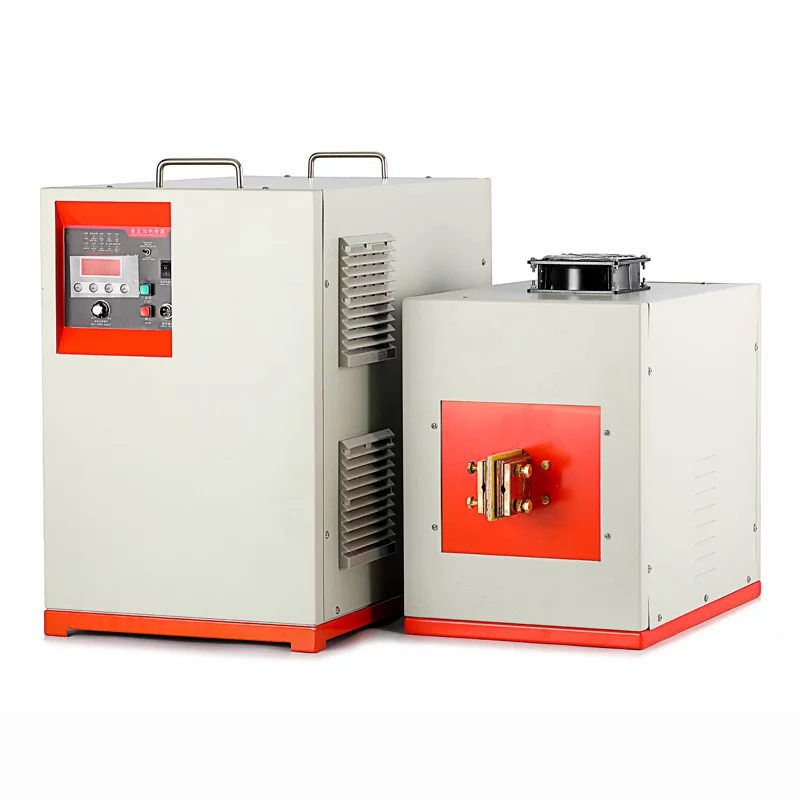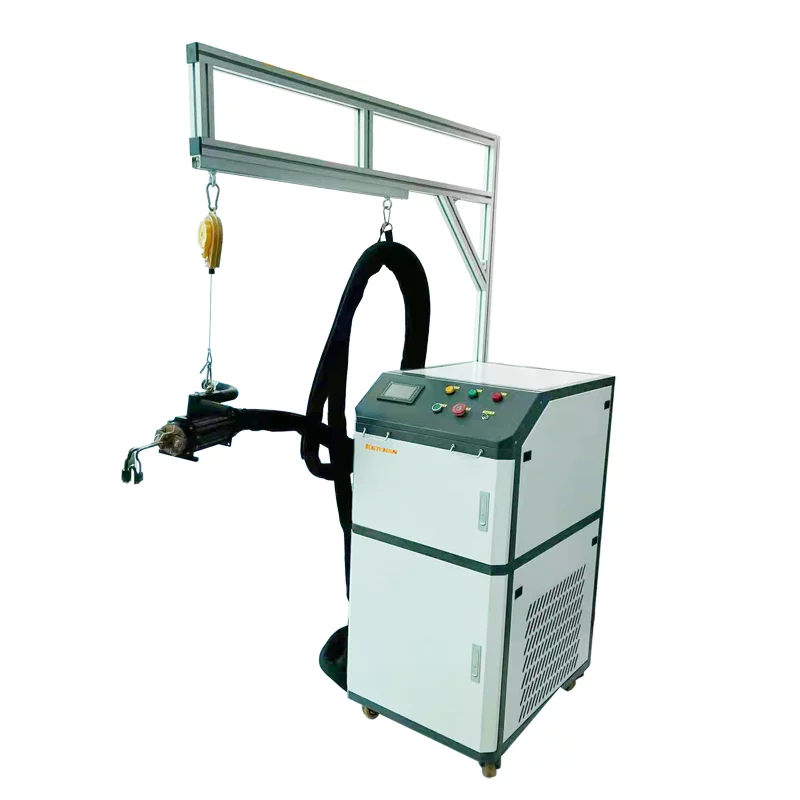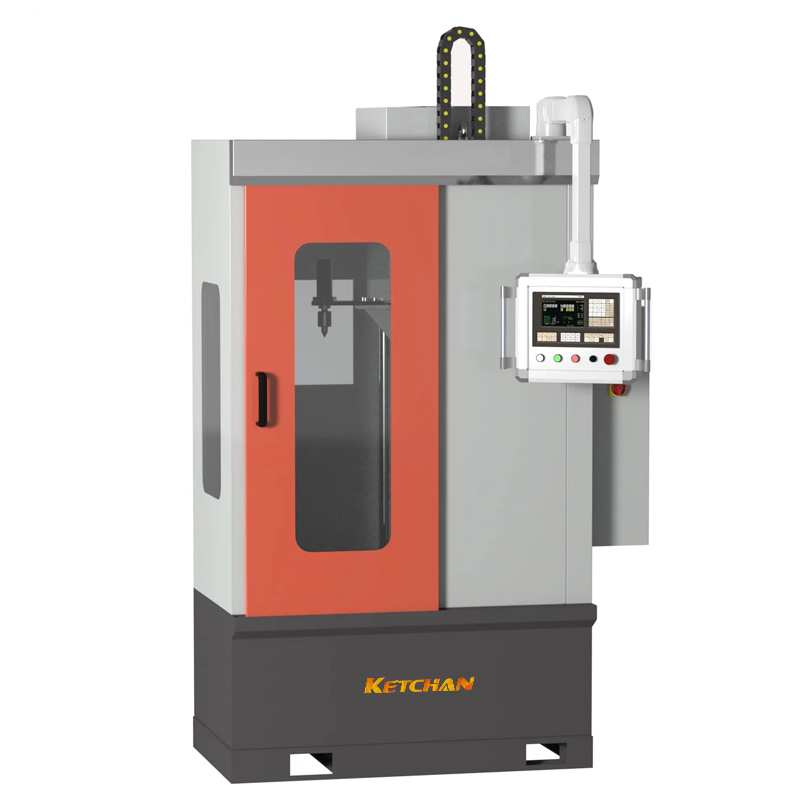C.Control of other defects in induction quenching
1. Too thick hardening layer
The teeth of small modulus gear are almost completely quenched after the gear is heated and quenched at the same time, which causes the teeth to be interrupted in the process of use.In order to obtain the hardening layer distributed along the tooth profile, one of the effective measures is to make gears with low hardenability steel.Select equipment with high frequency in the process, increase the power per unit area, narrow the gap between inductor and workpiece, reduce heating time, and also reduce the thickness of hardening layer.
2. Unreasonable distribution of hardening areas
Hardening area and the hardened zone, transition part of stress concentration in the workpiece, such as spline shaft spline gear tooth surface and tooth root at the end of the junction, half shaft, flange and shaft arc transitional area and artifacts in the groove of the handover face, the presence of local residual tensile stress peak, at the same time is vulnerable parts of the structure in service, prone to fracture.To this end, some measures can be taken to make the hardened area leave the stress concentration of the hazard section 6~8mm, or to the section of the transition of the corner of the implementation of quenching.
3. Surface burns
The contact between inductor and workpiece shortens the surface arc of the workpiece leaving burn marks and erosion pits.Therefore, attention should be paid to the internal stress of the workpiece, the precision of the quenching machine tool, the rigidity of the inductor and the clearance between the workpiece.In addition, the workpiece should be removed burrs, iron filings and oil stains before induction hardening, otherwise it is easy to arc with the sensor during heating.Arc arc will not only damage vision, but also damage sensors and equipment.
4. Uneven heating
The reason for the uneven heating is the uneven clearance between the inductor and the quenching workpiece surface.The difference in coaxiality of the spindle of a quenching machine tool.To this end, the clearance should be adjusted evenly after reheating, adjust the machine tool or replace the mandrel.
D. Operating specifications for induction heat treatment
When the workpiece is quenched by induction, if the operation is improper or does not conform to the specification, the workpiece will have defects, so we must pay attention to the operation of induction quenching and tempering.
1. Operation points of induction heat treatment
1) When the shaft workpiece is quenched, the center positioning is generally adopted, but the strength should not be too large;Otherwise, easy to lead to workpiece deformation.For the workpiece that cannot be positioned with the center, positioning sleeve or axial positioning card sleeve can be used.When the shaft workpiece’s fillet is not required to be quenched and strengthened, the hardened layer should be separated from the fillet by a certain distance (such as 6-8mm), so that the residual tensile stress at the junction of the hardened area and the non-hardened area can be kept away from the fillet to improve the fatigue strength.
2) For continuous quenching, if the shaft workpiece is large in diameter or the equipment is underpowered, the inducer or workpiece may be used to reverse heating and then immediately move continuously the fire.
3) When there are grooves and oil holes on the surface of the workpiece, the concentrated induced current will cause local overheating and even fire cracks. Iron pin can be used to plug it, so that the induced current is evenly distributed.
4) When the gear’s full teeth are heated and quenched, it shall be carried out on the fire machine. The clearance between the gear and the positioning mandrel shall be 0.20~0.30mm. The rotation speed in the quenching cooling medium shall not be greater than 30r/min
5) When the gear with internal and external teeth are quenched, the internal gear shall be quenched first, and then the external gear shall be quenched.If necessary, while heating the outer teeth, cool the inner gears with water to prevent them from tempering.For gears with clutch claws on the end face, the claws should be quenched first and then the gear should be quenched.
6) When single-tooth continuous quenching is adopted for large-modulus gears, in order to ensure the consistency of the gap between inductor and tooth, mold positioning of tooth groove is generally adopted.
2. Quality repair of induction quenching workpiece
When the induction quenching workpiece is allowed to be repaired, the hardness is low or there are large soft spots;The depth of hardened layer does not meet the technical requirements;Inadequate heating temperature causes unqualified metallographic structure and so on.
Repair parts can be handled in the following ways:
1) The refinished piece is inductively heated to 700-750℃ and cooled in air. Then it is taken up a second square fire as per the workpiece hardening specification.
2) The repaired parts are heated to 550~600℃ in the furnace and held for 60-90min, then cooled in water or air, and then quenched for the second time according to the workpiece’s quenching specification.
All repaired work pieces should be strictly inspected for quality.





